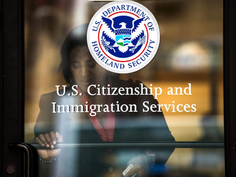Trump’s Day-One Tariff Plan: A Bold Economic Gamble
- V. E. K. Madhushani

- Nov 27, 2024
- 4 min read
Updated: Nov 27, 2024
Vithanage Erandi Kawshalya Madhushani Jade Times Staff
V.E.K. Madhushani is a Jadetimes news reporter covering Business.

Sweeping Tariffs on Mexico, Canada, and China: Trump’s Opening Move
On the first day of his new presidency, Donald Trump plans to impose sweeping tariffs on three of the United States' top trading partners China, Mexico, and Canada. These proposed tariffs, announced in a post on Trump’s Truth Social platform, include a 25% tariff on all goods entering the US from Mexico and Canada, as well as an additional 10% tariff on Chinese imports.
Trump claims these measures aim to address illegal immigration, drug smuggling specifically fentanyl and imbalances in international trade. The move signals a stark escalation in trade policies that could have far-reaching economic consequences for both the US and its trading partners.
What’s Behind the Tariff Threats?
Trump’s new tariff proposals target long-standing grievances with the US’s largest trading partners. For Canada and Mexico, the tariffs are tied to a push for stronger enforcement on drug trafficking and illegal migration into the US. With China, Trump’s demands center on harsher crackdowns on the production and smuggling of fentanyl, a synthetic opioid blamed for tens of thousands of deaths annually in the US.
“Both Mexico and Canada have the absolute right and power to easily solve this long-simmering problem,” Trump wrote. “It is time for them to pay a very big price.”
These threats reflect Trump’s familiar tactic of using trade policy as leverage to negotiate broader agreements on unrelated issues, a strategy he frequently employed during his first term.
Targeting Key Trading Partners: Economic Stakes for the US
The scale of these proposed tariffs is unprecedented. Together, Mexico, Canada, and China account for nearly 40% of the $3.2 trillion in goods imported by the US each year.
Canada and Mexico : Both countries rely heavily on trade with the US. Around 80% of Mexico’s exports and 75% of Canada’s exports are destined for the US market. Tariffs on these goods could disrupt supply chains, hurt businesses, and potentially lead to retaliatory measures.
China : Although trade tensions between the US and China have simmered for years, China remains one of the US’s largest trading partners. About 15% of China’s exports head to the US, and additional tariffs could further strain its already slowing economy.
Trump’s proposed tariffs also appear to conflict with the US-Mexico-Canada Agreement (USMCA), a trade pact signed during his first term that established duty-free trade between the three nations. Critics warn that unilateral tariff hikes could violate the agreement’s terms and jeopardize North American economic cooperation.
The Fentanyl and Migration Angle
Trump’s decision to link trade policy with issues like fentanyl smuggling and illegal immigration has sparked intense debate.
Fentanyl Crisis : The US has urged Beijing to crack down on fentanyl precursors, which are smuggled into Mexico and later manufactured into the deadly opioid. While China has denied lax enforcement, Trump’s new tariffs seek to pressure Beijing into taking tougher measures.
Migration and Border Security : Trump’s tariffs on Mexico and Canada are tied to demands for stricter border enforcement to curb illegal migration into the US. Trump argues that both countries have the resources to address the issue but have failed to act decisively.
Critics, however, question whether tariffs are the right tool to address these complex challenges, warning they could backfire by harming US businesses and consumers without achieving meaningful policy changes.
Reactions From Global Leaders and Critics
Global reactions to Trump’s announcement have been swift and critical.
Mexico : Mexican officials have highlighted their country’s reliance on the US as a trade partner, emphasizing the need for cooperation rather than punitive measures. Mexican Senate leader Gerardo Fernández criticized Trump’s approach, saying, “What tariffs should we impose on their [America’s] goods until they stop consuming drugs and illegally exporting weapons to our homeland?”
Canada : Ontario Premier Doug Ford described the proposed tariffs as “devastating to workers and jobs in both Canada and the US.” Canadian Prime Minister Justin Trudeau reportedly had a “good discussion” with Trump on the issue, though the details remain unclear.
China : Chinese officials defended their efforts to combat fentanyl trafficking, warning that a trade war would harm both nations. “No one will win a trade war or a tariff war,” a spokesperson said, underscoring concerns over escalating tensions.
How Do Tariffs Work and Who Pays the Price?
Tariffs are essentially taxes levied on imported goods as they enter a country. While Trump has claimed that foreign countries bear the cost of tariffs, economists widely dispute this notion.
For example, a car imported to the US with a value of $50,000 and subject to a 25% tariff would face an additional $12,500 charge. This cost is paid by the US company importing the car, not the exporting country. These costs are often passed on to consumers in the form of higher prices, meaning American households are likely to feel the economic burden of Trump’s proposed tariffs.
Will This Strategy Succeed? Risks and Consequences
Trump’s tariff strategy reflects his belief that economic pressure can force other nations to meet US demands. Supporters see this as a bold move to protect American jobs, address drug trafficking, and tackle immigration challenges.
However, critics warn of significant risks:
Economic Fallout : Tariffs could disrupt supply chains, hurt small businesses, and raise consumer prices in the US.
Retaliation : Trading partners may respond with their own tariffs, targeting American exports like agriculture and manufacturing.
Global Instability : Unilateral tariff hikes could undermine international trade agreements and destabilize economic relationships.
A High-Stakes Gamble
As Trump prepares to take office, his ambitious tariff plan sets the stage for high-stakes negotiations with America’s top trading partners. While his supporters view the move as a necessary step to assert US interests, critics warn it could backfire by damaging the economy and straining diplomatic ties.
Whether this bold gamble will succeed remains to be seen, but one thing is clear: Trump’s approach to trade and foreign policy is as controversial as ever, and its repercussions will reverberate far beyond America’s borders.











































Comments